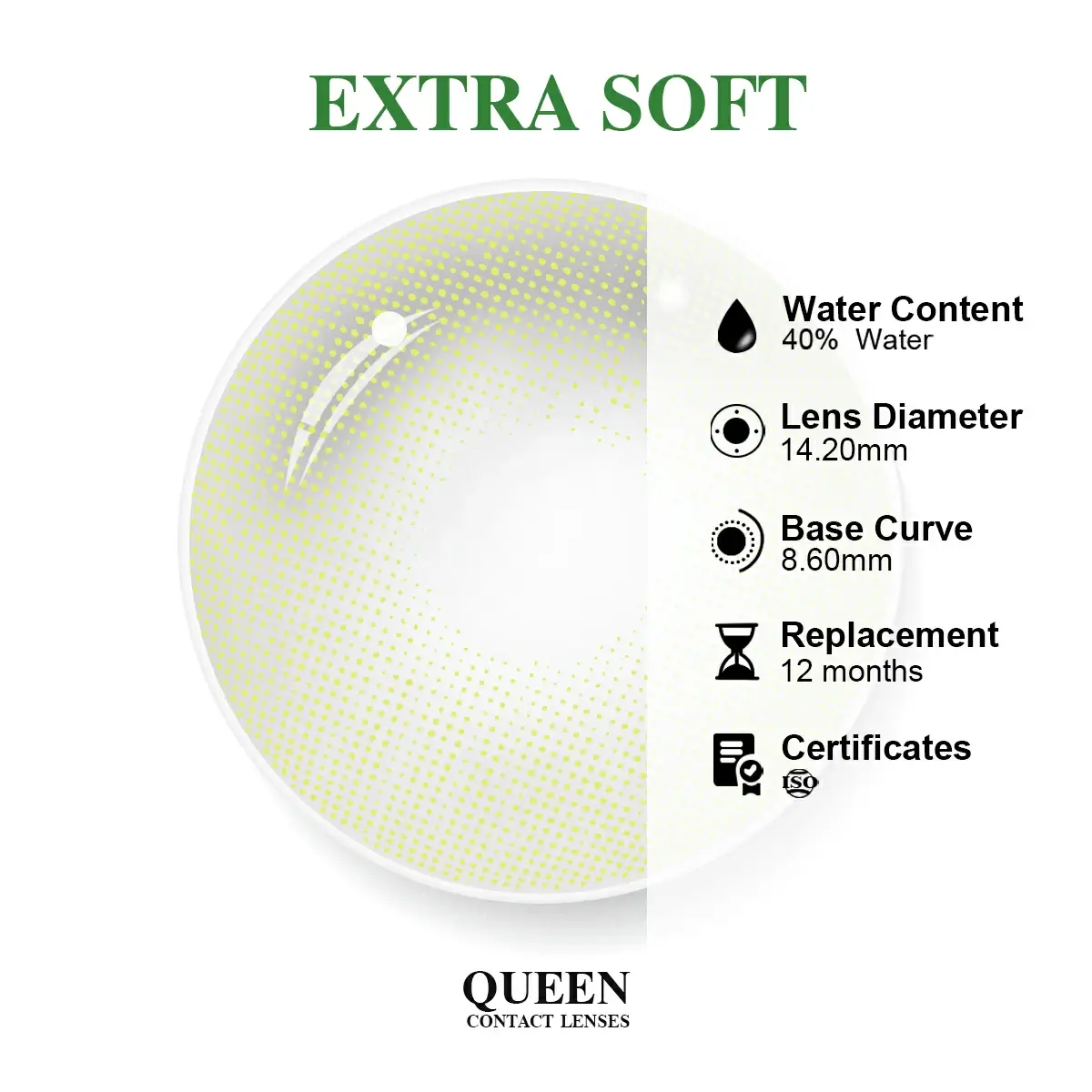Bifocal colored contact lenses differ from regular contact lenses in several ways:
- Vision Correction: Bifocal contact lenses are designed to correct presbyopia, a condition that affects near vision as people age. They have two distinct optical powers: one for distance vision and another for near vision. Regular contact lenses typically correct either nearsightedness (myopia), farsightedness (hyperopia), or astigmatism, but not presbyopia.
- Segmented Design: Bifocal contact lenses have a segmented design with two distinct zones: one for distance vision and another for near vision. The upper part of the lens is usually for distance vision, while the lower part contains the near-vision prescription. This allows wearers to see clearly at both distances without the need for reading glasses.
- Color Options: Bifocal colored contact lenses offer the added feature of changing or enhancing the color of the eyes. They come in a variety of colors and patterns to suit different preferences and aesthetic preferences. Regular contact lenses may also come in different colors, but they do not typically have the bifocal design for near vision correction.
- Prescription Strengths: Bifocal contact lenses are available in different prescription strengths for both distance and near vision correction. The prescription strength of each zone is determined based on the individual’s specific vision needs. bifocal colored contact lenses In contrast, regular contact lenses are prescribed based on the wearer’s refractive error (e.g., nearsightedness, farsightedness) without the need for bifocal correction.
- Adaptation Period: Some wearers may require an adaptation period to adjust to wearing bifocal contact lenses, especially if they are new to multifocal lenses. The brain needs time to learn how to interpret the visual signals from different zones of the lens effectively. Regular contact lenses typically do not require a similar adaptation period if the wearer is already accustomed to wearing contact lenses.
- Cost: Bifocal colored contact lenses may be more expensive than regular contact lenses due to the additional features, such as the bifocal design and color options. The cost can vary depending on factors such as the brand, lens material, and prescription strength. Regular contact lenses may be more affordable for individuals who do not require bifocal correction or color enhancement.
Overall, bifocal colored contact lenses offer the combined benefits of vision correction for presbyopia and aesthetic enhancement through color options. They are suitable for individuals who require both near and distance vision correction and desire to change or enhance the appearance of their eye color.
